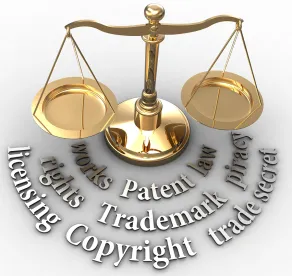Addressing the scope of the Patent Trial and Appeal Board’s (“Board”) discretion under 35 U.S.C. § 325(d) to deny institution, the Board designated three opinions as precedential or informative.
Precedential Opinions:
In Advanced Bionics, LLC v. MED-EL Elektromedizinische Geräte GmbH, Case No. IPR2019-01469 (USPTO Feb. 13, 2020) (Deshpande, APJ) (designated precedential on Mar. 24, 2020), the Board set forth a framework for evaluating whether “the same or substantially the same prior art or arguments previously were presented to the Office.” The two-part test is: (1) whether the same or substantially the same (a) art or (b) arguments previously were presented to the Office; and (2) if either condition of the first part of the framework is satisfied, whether the petitioner has demonstrated that the Office erred in a manner material to the patentability of challenged claims. The Board’s decision reiterated its commitment to deferring to previous Office evaluations such that if a petitioner fails to s establish material error, or if reasonable minds could differ about the purported treatment of the art or arguments, then it cannot be said the Office erred. The Board also provided guidance on showing error in the Office’s previous consideration of similar art or arguments. If the Office’s previous record is silent or not well developed, then a petitioner may show that the Office overlooked something persuasive. If the alleged error is a disagreement with a specific finding in the record, then the petitioner’s showing of material error must overcome persuasively that specific finding. Applying that standard to the petition, the Board found that substantially the same art and arguments had been made during prosecution, but the petitioner failed to show that the examiner misapprehended or overlooked specific teachings in the relevant prior art. As a result, the Board found it appropriate to deny the petition under § 325(d).
In Oticon Medical AB v. Cochlear Ltd., Case No. IPR2019-00975 (USPTO Oct. 16, 2019) (Worth, APJ) (designated precedential as to §§ II.B and II.C on Mar. 24, 2020), the Board set forth more detail for evaluating whether the presented art is substantially the same prior art or “new, noncumulative prior art.” Evaluating the prior art references that the patent owner alleged were “substantially the same” under § 325(d), the Board looked to the relevant structures disclosed in each prior art reference and the problems each structure was attempting to solve. The Board determined that the references disclosed different structures that served different purposes, and as a result, determined that the new reference in the petition was not “substantially the same” and declined to use its discretion under § 325(d) to deny the petition. The Board also declined to exercise discretion under § 314(a), where the patent owner had argued that the advanced state of the parallel district court proceeding would render the IPR entirely duplicative of the district court case. The Board disagreed, finding that one of the references in the IPR had not been disclosed in the district court proceeding, so the IPR would not be directly duplicative of the district court action. In addition, no trial date had been set. As a result, the Board declined to deny institution based on § 314(a).
Informative Opinion:
In PUMA North America, Inc. v. NIKE, Inc., Case No. IPR2019-01042 (USPTO Oct. 31, 2019) (Wieker, APJ) (designated informative on Mar. 24, 2020), the Board denied institution under section § 325(d). The petition relied on the same combination of references that the examiner had twice used in rejecting the claims. The Board compared the examiner’s application of the prior art with the petitioner’s application of the prior art in the petition. It found a “high degree of overlap” because they applied the same references to the same limitations and combined them in the same way. Having found the art and arguments similar, the Board turned to the two alleged “errors” in the examiner’s obviousness analysis. The first alleged error was that the examiner did not appreciate that a skilled artisan would have known how to implement the proposed modification. The Board rejected this as irrelevant to the obviousness analysis and not erroneous because it said nothing about why one of skill would have had a reason to make the change. Similarly, the Board rejected the second alleged error that had pointed to the examiner’s failure to recognize that the modification was merely a matter of aesthetic design choice. The Board rejected this argument because it failed to offer any “affirmative reason” why a skilled artisan would have made the change. After weighing the relevant factors, the Board elected to use its discretion to deny institution under § 325(d).



 />i
/>i
